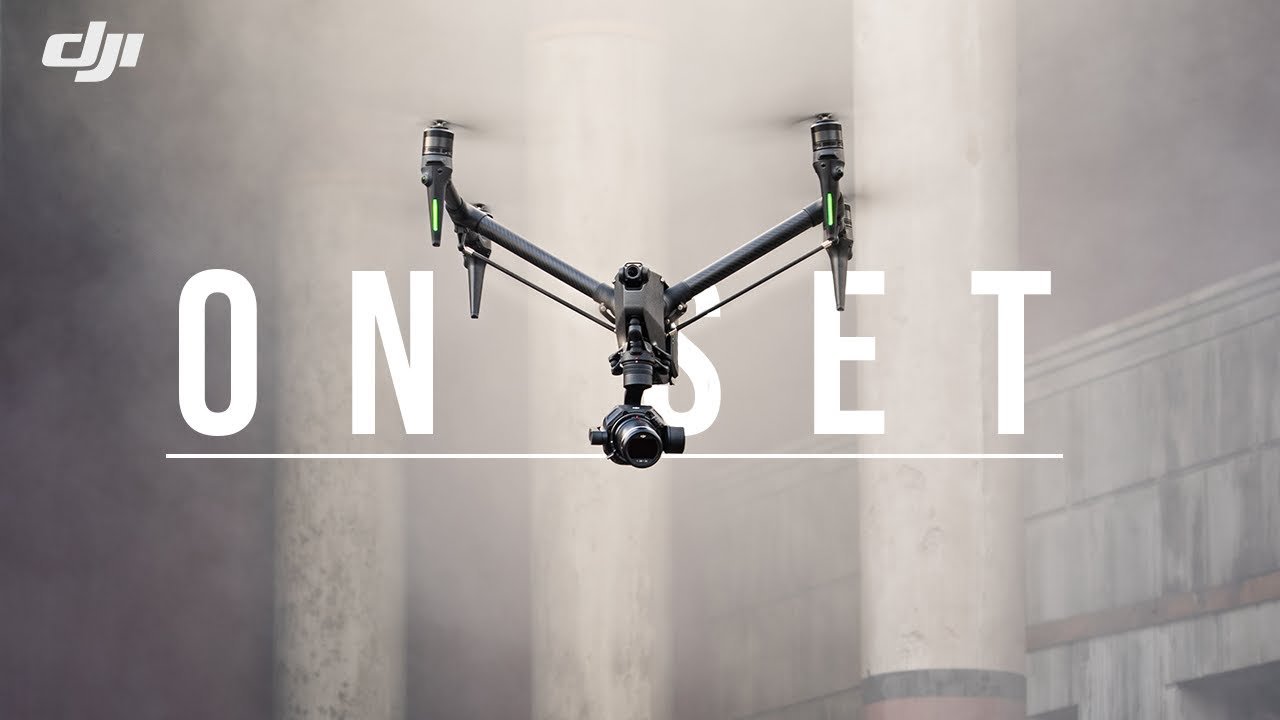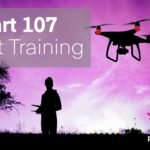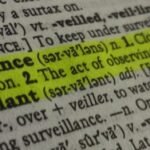Importance of Nighttime Drone Photography
When we think about drone photography, our minds often drift to bright, sunny days with blue skies and vibrant colors. However, there’s a whole new world waiting after sunset—one that reveals a different side of beauty, artistry, and storytelling through the lens of a drone. Nighttime drone photography opens the door to capturing breathtaking landscapes and mesmerizing cityscapes under the glow of artificial lights, which can offer a unique perspective that simply isn’t available during the day. 🌌 Imagine soaring high above a city skyline illuminated by thousands of lights, creating a tapestry of colors reflecting on the water below. The ethereal beauty of illuminated landmarks juxtaposed against the dark sky can elicit emotions and tell stories that resonate deeply with viewers. Whether you’re a professional photographer or just a hobbyist, exploring the possibilities of nighttime drone photography can deepen your understanding of the art and expand your skill set.
Unique Aesthetic Appeal
One of the most significant aspects of nighttime drone photography is its unique aesthetic appeal. Consider the following:
- Contrast and Depth: The dark sky creates a stunning contrast against bright lights, enhancing the visual depth of your images.
- Vibrant Colors: Artificial lighting can bring out colors that are often muted during the day, allowing for striking visuals that pop.
- Dynamic Shadows: Drones can capture unique shadow patterns cast by urban structures, offering a different viewpoint that can convey moods and narratives.
Personal experience comes into play here. During a recent nighttime shoot in a bustling urban area, I was captivated by how the drone captured light trails from moving vehicles, turning mundane traffic into flowy, artistic lines of light. It felt like painting with light, and the results were nothing short of magical.
Telling Stories
Nighttime drone photography isn’t just about capturing pretty pictures; it’s about storytelling. A well-composed nighttime shot can convey emotions and narratives that resonate with its audience. For instance:
- Urban Life: Aerial shots of a busy nightlife scene can tell the story of a city that never sleeps, showcasing the vibrancy and energy of its night owls.
- Natural Landscapes: Capturing dawn or dusk over a serene lake can evoke feelings of calm and introspection.
- Cultural Events: Festivities and gatherings lit up by colorful lights can highlight cultural significance and community celebration.
Think about those moments you want to capture and share. That very essence becomes even more profound when you shoot it at night. Several of my friends have remarked that my images taken during the blue hour—the time just after sunset—have this enchanting quality that they can’t quite put into words.
Technical Challenges and Opportunities
While the allure of nighttime drone photography is undeniable, it also presents an array of technical challenges that demand skill, creativity, and thorough preparation. The low-light conditions can complicate capturing sharp, clear images, and it requires a good understanding of your drone’s camera settings. Here are some considerations:
- Higher ISO Settings: Adjusting your ISO for low-light environments is crucial but can lead to noise. Balancing this is key.
- Longer Exposure Times: Slow shutter speeds can bring out more light, but may result in motion blur if the drone is not stable.
- Specialized Equipment: Cameras designed for low-light performance and drones with image stabilization are incredibly advantageous.
If you’re new to nighttime photography, it’s a good idea to practice in a controlled environment before shooting in complex scenes. I once attempted to shoot a local festival; my shots turned out great, but the learning curve regarding stability and focusing in dark conditions was steep!
Expanding Artistic Horizons
Nighttime drone photography can also expand your artistic horizons. It encourages you to think outside the box, allowing for experimentation with techniques such as:
- Light Painting: Use a moving light source to create unique patterns in your shots.
- Time-Lapse: Capturing a series of photos and stitching them together can provide stunning results, showcasing movement over time against a night sky.
- Post-Processing: The editing stage is where your photos can really come alive. Removing noise and adjusting contrast or brightness offers a new creative outlet.
In my photography journey, I’ve discovered that experimenting with these techniques not only improves my skills but also significantly boosts my confidence.
Conclusion
The shift from daytime to nighttime opens up a realm of possibility for anyone eager to take their drone photography to the next level. By embracing the challenges and the unique beauty of the night, you can elevate your creative expression and storytelling. Whether you’re capturing illuminated cities, natural wonders, or intimate gatherings, nighttime drone photography is a powerful medium that brings emotion, depth, and wonder into your images. The night is not the end of a day, but a canvas waiting for your artistry.✨

Safety Precautions for Nighttime Flying
As exhilarating as nighttime drone photography is, it comes with a set of challenges and important safety precautions that you must consider. This section highlights two critical aspects of ensuring safety while enjoying your nighttime adventures: understanding FAA regulations and utilizing anti-collision lights.
Understanding FAA Regulations
Before you take to the night skies, it’s essential to familiarize yourself with the Federal Aviation Administration (FAA) regulations that govern nighttime drone operations. The rules are specifically designed to ensure safety for both drone operators and other airspace users.
- Part 107 Certification: If your drone weighs more than 0.55 pounds (250 grams) and you’re using it for commercial purposes, you must have a Part 107 Remote Pilot Certificate from the FAA. Obtaining this certification involves passing a test that covers essential rules and safety protocols.
- Visual Line of Sight (VLOS): One of the critical regulations is maintaining a visual line of sight with your drone at all times. Although this can be challenging at night, it’s crucial for avoiding obstacles and maintaining complete control over your drone.
- Operating Within Controlled Airspace: Before flying at night, check your operating area to ensure you’re not entering controlled airspace without proper clearance. Tools like the FAA’s UAS Facility Map or apps such as AirMap can help you determine airspace restrictions.
- No Fly Zones: Always check for no-fly zones, especially around airports, military bases, and sensitive locations. Many online resources can provide this information.
- Night Flight Waivers: If you don’t have a waiver allowing you to operate at night, you will need to obtain one. This typically requires demonstrating that you can conduct safe operations after sunset.
For example, before a recent shoot at my local waterfront, I took the time to check my area for any restrictions. I found that I would be in proximity to some controlled airspace, so I ensured I had the necessary permissions in place before flying.
Utilizing Anti-Collision Lights
In low-light conditions, visibility can be severely limited, posing unique risks to being able to see your drone and keeping other airspace users aware of its presence. This is where anti-collision lights come into play.
- Importance of Anti-Collision Lights: These lights enhance the visibility of your drone after sunset, making it easier to see both for you and for others in the airspace. The FAA recommends that all drones flown at night must be equipped with lights that can be seen from a distance.
- Choosing the Right Lights: Selecting appropriate lights is critical. Consider the following options:
- Strobe Lights: High-intensity strobe lights can provide excellent visibility from a distance. They’re often lightweight and can be mounted easily on your drone.
- Color Options: Using different colored lights (red, green, and white) gives better situational awareness and can indicate which direction the drone is facing.
- Proper Placement: Make sure your anti-collision lights are mounted securely and positioned to ensure maximum visibility from various angles. This can involve placing lights on the top and bottom of your drone.
- Battery Life: Always check the battery life of your anti-collision lights before heading out. If they fail mid-flight, it can become challenging to see your drone’s location.
Remember that during one of my twilight aerial sessions, my drone’s lights flickered unexpectedly. Fortunately, I had a spare set of lights with me, and I swiftly replaced them before launching. Having those extra lights not only saved my shoot but also kept the air safe.
- Visibility of Surroundings: It’s wise to pair your anti-collision lights with a flashlight or headlamp aimed at your drone’s surroundings. You might find obstacles that aren’t visible from your vantage point alone.
Preparing for Safe Night Flights
Beyond the FAA regulations and anti-collision lights, consider these additional tips for safe nighttime flying:
- Pre-Flight Checklist: Develop a comprehensive pre-flight checklist that includes checking your drone’s battery, navigation systems, and ensuring your lights are functioning.
- Flight Location Assessment: Before launching, make sure you’re familiar with the area. Scout the location during the day and identify potential hazards—power lines, trees, and rooftop features that may not be obvious in low light.
- Emergency Protocols: Always have a plan in case of an emergency, including knowing how to safely bring your drone back if visibility decreases.
- Practicing First: Consider making your first nighttime flights in wide-open spaces away from obstacles. This allows you to focus on getting comfortable with your drone in low-light conditions before tackling more complex environments.
Navigating the broad skies at night can be one of the most rewarding photography experiences. Just ensure these safety precautions are at the forefront of your mind. The thrill of capturing breathtaking images at night doesn’t need to come at the expense of safety. With the right preparations and gear, you can embark on nighttime drone photography adventures that are as safe as they are exhilarating. 🌠

Choosing the Right Equipment for Nighttime Adventures
Once you’ve laid the groundwork for safety and compliance, the next step towards successful nighttime drone photography is choosing the right equipment. The two essential aspects to consider are the camera capabilities suitable for low-light conditions and the inclusion of night vision features—each playing a pivotal role in capturing those stunning night scenes. 🌌
High-Quality Cameras for Low-Light Conditions
When it comes to nighttime photography, the quality of your camera can be the difference between striking images and washed-out, blurry disappointments. Here are some key features to look for in a camera that excels in low-light conditions:
- Sensor Size: A larger sensor can capture more light, which is critical for nighttime shooting. Full-frame sensors or larger 1-inch sensors are often preferred.
- Low ISO Performance: Look for cameras that handle higher ISO settings effectively without introducing excessive noise. Higher ISO settings allow you to capture images without having to slow the shutter speed too much, which is crucial for avoiding motion blur when the drone is in motion.
- Wide Aperture Lenses: A lens with a wide maximum aperture (like f/2.8 or lower) is beneficial. Wider apertures let in more light, enabling you to shoot in darker conditions while still maintaining sharp images.
- Stabilization Features: Since drones can experience minor vibrations, effective stabilization technology is imperative for low-light shooting. Drones that incorporate gimbals to stabilize the camera reduce motion blur and produce crisper images.
- RAW Image Capture: If your drone supports it, shooting in RAW format allows for greater flexibility during post-processing. You can recover detail in shadows and adjust exposure more effectively than with JPEG files.
For instance, I’ve had tremendous luck using a drone equipped with a high-quality camera that features all the above points. During an evening shoot at a city viewpoint, I was able to capture clear, vibrant images of the skyline and reflections in the water, thanks to that camera’s low-light capabilities.
Considerations for Night Vision Capabilities
Incorporating night vision capabilities into your drone photography setup can open new avenues for creativity and exploration. Here are some important aspects to consider when selecting equipment that features night vision:
- Types of Night Vision: Generally, there are two main types of night vision technologies—thermal and infrared.
- Thermal Imaging: This technology detects heat emitted by objects, creating a visual map based on temperature differences. It’s excellent for wildlife observation or search-and-rescue operations.
- Near-Infrared Cameras: These often integrate with regular cameras to enhance visibility in the dark. They produce monochrome images but allow better visibility in very low light, capturing details that traditional cameras may miss.
- Low-Light Video Capability: If you’re interested in video, consider drones that support low-light video recording. This capability can help maintain a good frame rate while shooting in darkness.
- Real-Time Transmission: Make sure your drone can transmit video feeds in real-time. Knowing what you’re capturing is important, especially in low-light scenarios where every detail matters.
- Image Quality: When evaluating different night vision options, consider the trade-off between resolution and night vision performance. Higher-resolution cameras produce clearer images, but ensure you can balance this with performance in low-light situations.
- User-Friendliness: Operating night vision technology can be complex. Look for a system with intuitive controls and good battery life, so you can concentrate more on capturing your shots rather than struggling to operate your gear.
When I first experimented with a thermal imaging camera mounted on my drone, it felt like stepping into a new world. Tracking wildlife movements during the night was fantastic—seeing creatures traverse the landscape that would otherwise be undetectable in dark conditions was both exhilarating and educational.
Making the Right Choice
Choosing the right equipment for nighttime adventures can enhance your experience and result in captivating imagery. Here’s a quick checklist to help you pick the perfect gear:
- Camera Quality: Ensure a robust camera with a large sensor and low noise at high ISO.
- Wide Aperture: Opt for lenses with apertures of f/2.8 or lower.
- Stabilization: Consider drones with gimbal stabilization to minimize motion blur.
- Night Vision Capabilities: Evaluate whether thermal or infrared functions are necessary for your photography goals.
- Ease of Use: Look for intuitive interfaces, especially when it comes to night vision systems.
By carefully selecting your equipment based on these essential criteria, you set yourself up for success in capturing the otherworldly beauty of nighttime settings. Don’t forget, experimentation leads to mastery! While some shots may not turn out as planned, every attempt will bring you closer to capturing that perfect night scene. Embrace the night, and let your creativity soar! 🌟
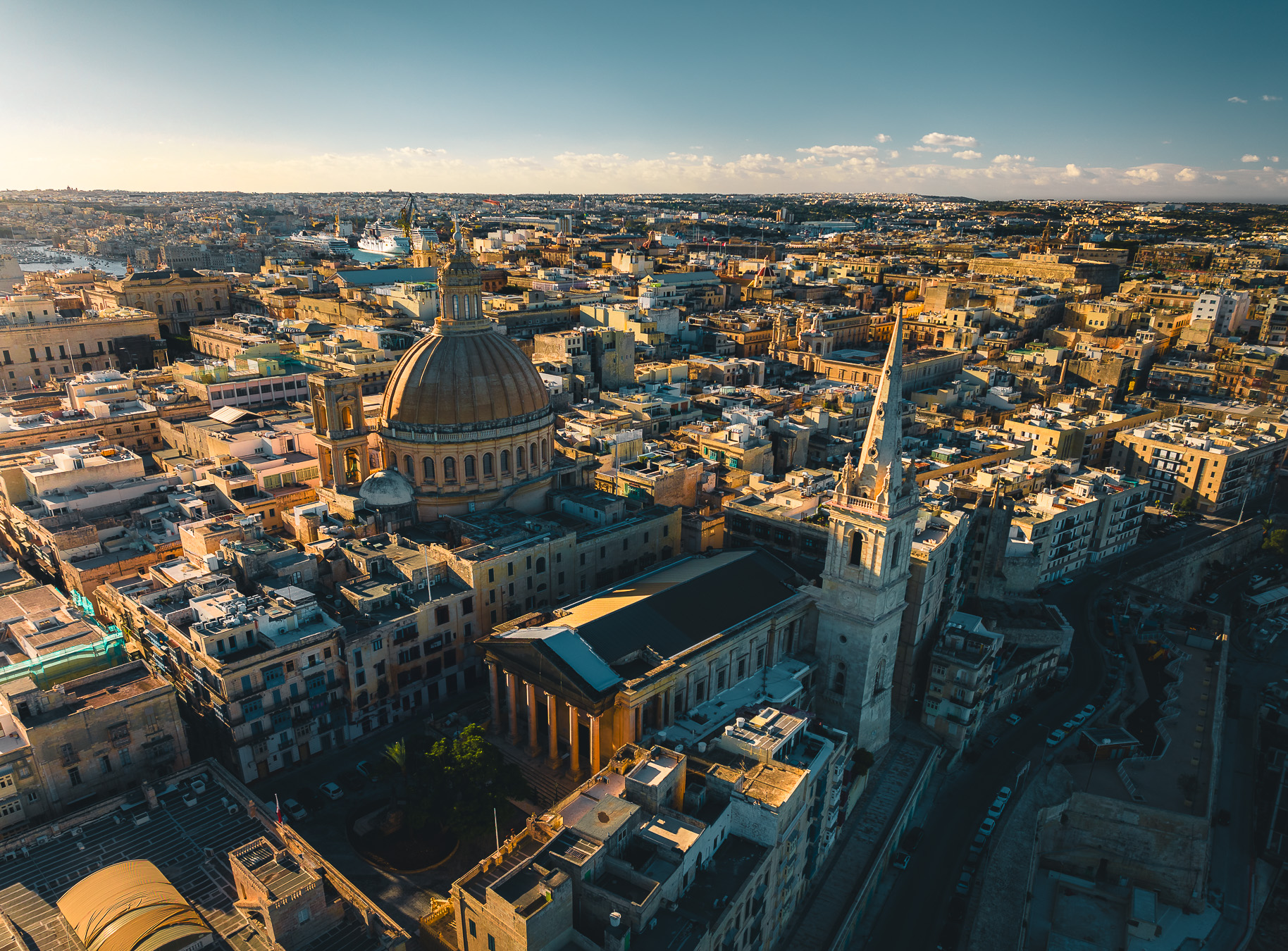
Planning Your Nighttime Drone Photography Expedition
Successfully capturing breathtaking nighttime photographs doesn’t just begin when you launch your drone into the dark sky; it requires thorough planning and preparation. Downloading the latest firmware or charging your batteries is just part of the process. Two crucial aspects will significantly impact your results: researching locations and conditions, and preparing backup batteries and memory cards. Let’s dive into these elements to ensure your nighttime drone photography is a standout experience! 🌙
Researching Locations and Conditions
The first step to a successful nighttime shoot is carefully selecting and researching your locations. Unlike daytime photography, where the sun’s position may guide your choices, nighttime demands a different strategy. Here are some tips based on my own experiences:
- Scenic Spots: Look for locations that are known for their scenic beauty after sunset. Some great options include:
- Urban landscapes with iconic buildings
- Scenic overlooks or mountains
- Parks, lakes, or rivers reflecting city lights
- Cultural or historical landmarks
- Anticipating Lighting: Use apps that provide sunset and moonrise times so you can plan your shoot around when the natural light disappears. Apps like PhotoPills or The Photographer’s Ephemeris can be incredibly helpful. During my first night shoot, I checked the moon phase, and shooting with a rising full moon added a magical touch to my images of the city skyline.
- Assess Accessibility: Ensure that you can safely access your chosen location at night. It’s a good idea to visit during the day to scout the area for obstacles, potential hazards, and any required permissions—especially if you’re shooting in urban settings or parks.
- Local Weather Conditions: Keeping an eye on weather forecasts is crucial. Cloud cover, fog, and rain can all impact the quality of your shots. Don’t forget to consider:
- Wind speed (high winds can affect stability)
- Precipitation levels
- Temperature (affects battery performance)
- Safety Considerations: Lastly, evaluate the safety of your location at night. Opt for places that are well-lit and have good visibility. Stay aware of your surroundings and consider bringing a friend to enhance safety and provide assistance if needed.
For instance, when planning a shoot of a local festival, I realized late that the area was prone to large crowds. So I adjusted my schedule for a more tranquil time when I could capture the event’s beautiful lights without distractions.
Preparing Backup Batteries and Memory Cards
After you’ve nailed down your shooting locations, it’s time to prepare your equipment for the excursion. This includes ensuring you have enough power and storage to capture all your inspiring shots.
- Battery Management:
- Bring Extra Batteries: Nighttime shoots often draw more power than daytime sessions. Cold temperatures can also reduce battery life, so packing extra batteries is essential.
- Use a Battery Management System: Consider a portable charger or battery management system that allows you to rotate batteries in and out while keeping everything charged on the go.
- Testing Battery Performance: Before heading out, test your batteries to gauge their performance and ensure they’re fully charged. Keep an eye out for any battery that appears to be degrading.
- Memory Cards: Just as it’s crucial to have sufficient battery life, you also need ample storage space for your images.
- Card Capacity: Opt for memory cards with high capacity and fast writing speeds (look for UHS-II or equivalent). Multi-day trips? Bring several cards to ensure you’re never caught short.
- Format Before Use: Format your memory cards before each shoot to clear any old data and avoid unexpected write errors. It’s a habit I’ve cultivated over time. On one occasion, I neglected this step and lost valuable footage because of a corrupted card!
- Labeling and Organization: Take a few extra moments to label your batteries and cards. This will help you keep track of which ones have been used if you’re rotating through several during your shoot.
Final Thoughts
By meticulously researching your locations and carefully preparing your batteries and memory cards for nighttime drone photography, you’re setting yourself up for a successful and satisfying experience. Anytime I’ve taken these steps seriously, the outcomes have always been worth it. Emphasizing planning helps foster creativity and allows you to focus entirely on your artistry when the time comes to launch your drone into the starry night sky. Being well-prepared can mean the difference between capturing dazzling imagery and rushing through a shoot, worried about equipment failures or environmental conditions. Happy flying, and may your nocturnal adventures yield stunning images! ✨

Tips for Capturing Stunning Nighttime Drone Shots
Having prepared your gear and researched locations, it’s time to bring your nighttime photography to life! Capturing stunning nighttime drone shots comes down to a few key tips that focus on adjusting your camera settings and leveraging the beauty of light trails and reflections. Let’s dive into these essential techniques! 🌌
Adjusting Settings for Night Photography
The magic of nighttime photography lies in how you configure your drone’s settings. Here’s how to adjust your settings effectively to get those breathtaking shots.
- ISO Settings:
- Start with a Higher ISO: Begin with an ISO around 800 to 1600. This setting will help your camera pick up more light. However, consider the noise factor; higher ISO values can introduce unwanted noise, which may muddy your images.
- Test and Adjust: Don’t hesitate to test different settings. If your images are too grainy at 1600 ISO, roll it back to 800 and keep experimenting. During one shoot, I fiddled between ISO 1600 and 800 for city shots and found that 800 gave a cleaner image, which was crucial for achieving that sharp, crisp look.
- Shutter Speed:
- Longer Exposure Times: Longer exposure times (like 4-15 seconds) can let in more light, but they also increase the risk of motion blur if your drone moves even slightly.
- Use a Tripod Mode: Some drones have a “tripod mode,” which limits speed and helps with stability during long-exposure shots. For instance, when shooting a skyline with slow-moving clouds, I found using the tripod mode allowed me to keep everything still and vibrant.
- Aperture Settings:
- Wide Open: Use a wide aperture (f/2.8 or lower) to maximize the amount of light your lens captures. If your drone has multiple lenses, choose the one with the widest aperture for night shooting.
- Depth of Field: Be mindful of what you’re focusing on. A wide aperture creates shallow depth of field, so select your focus point carefully to ensure your main subject is sharp.
- White Balance:
- Experiment with Settings: At night, artificial lights can throw off your colors. Try adjusting your white balance to a “tungsten” setting (usually around 3000K) to get more accurate representations of light. Alternatively, use manual settings and adjust according to the scene.
- Post-Processing: Remember that minor adjustments can always be made later during editing. Using RAW format means you have more control over color correction!
- Preview Your Shot:
- Whenever possible, use your drone’s camera preview feature to check both framing and exposure after adjusting your settings. It’s a great way to double-check the results before you commit to the shot.
Utilizing Light Trails and Reflections
Nighttime photography offers unique opportunities for creativity, and one of the most exhilarating techniques involves capturing light trails and reflections. Here’s how to incorporate these elements into your shots!
- Light Trails:
- Capture Motion: Light trails illustrate movement, such as cars on busy streets or boats on water. For dramatic effect, position your drone above a road with fast-moving traffic and set a long exposure. This technique creates beautiful streaks of light.
- Timing is Everything: Aim for shots during peak traffic times for more dynamic images. It’s a technique I’ve used successfully while capturing city life at rush hour. The results were stunning streaks of red and white lighting curving down the streets.
- Reflections:
- Use Water Features: Look for lakes, rivers, or pools that can reflect the lights of your surroundings. Place your drone above these water bodies for mesmerizing reflections that double the visuals.
- Composition: When framing your shot, allow for reflections to take up a significant portion of the image. This duality can make a standard scene feel more expansive and immersive. During one shoot near a riverbank, I captured a night skyline mirrored in the water, which turned an ordinary image into something spectacular.
- Experiment with Compositions:
- Don’t hesitate to change your perspective while capturing these elements. Move the drone around to find the most flattering angles—low altitude can give you unique reflections, while high vantage points will help capture sweeping light trails from above.
- Symmetry: Aim for symmetry if possible, making sure that both the original and the reflection match up nicely. You can use the rule of thirds for effective composition, aligning the horizon on one third and allowing reflections to fill the bottom part.
- Post-Processing Enhancements:
- After your shoot, dive into post-processing to elevate your images. Play with color contrast, exposure, and sharpness to bring out the best in your light trails and reflections. You could introduce gradients and other effects to highlight the magical essence of nighttime.
Conclusion
Capturing stunning nighttime drone shots requires a blend of technical adjustments and artistic creativity. By mastering your camera settings and utilizing dynamic elements like light trails and reflections, you can create stunning photographs that convey the enchantment of the night. Each time I venture out with my drone at dusk or after dark, I keep discovering new methods to twist reality and present it in a mesmerizing way. So keep experimenting, stay patient, and embrace the excitement of nighttime drone photography! 🌠 Your next extraordinary shot might be just a drone flight away!
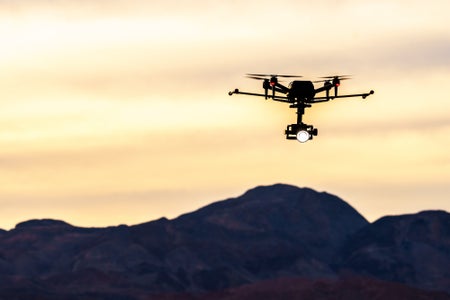
Editing and Enhancing Nighttime Drone Images
Congratulations! You’ve successfully captured some incredible nighttime drone images. Now it’s time to dive into the exciting world of post-processing. Editing can transform your good shots into breathtaking ones, allowing you to refine the details, enhance colors, and explore creative possibilities. Let’s take a closer look at two crucial aspects of editing nighttime drone images: removing noise and adjusting exposure, as well as adding creative effects with editing software. ✨
Removing Noise and Adjusting Exposure
Nighttime photography often introduces noise, especially when shooting at higher ISO levels. Here’s how to tackle this issue:
- Understanding Noise:
- What is Noise?: Noise appears as unwanted graininess or distortion in your images, which can detract from the overall quality. It’s often exacerbated by high ISO settings and long exposure times.
- Assessing Your Images: Start by zooming into your photos to check where noise is most prominent. Areas of solid color, like skies, are often the worst offenders.
- Using Noise Reduction Tools:
- Most photo editing software, like Adobe Lightroom or Photoshop, comes with built-in noise reduction tools. These can help minimize noise without sacrificing too much detail.
- How to Apply:
- In Lightroom, navigate to the “Detail” panel and adjust the “Luminance” slider to reduce noise. You might find that moving this slider between 20-40 works wonders without overly softening your details.
- Always preview the changes so you can find the right balance. In my experience, when I initially reduced noise, I overdid it and lost some details. A subtle touch can often yield the best results.
- Adjusting Exposure:
- Make Subtle Changes: Adjusting exposure can help recover details hidden in shadows or bright lights. Use the exposure, highlights, shadows, and contrast sliders to bring depth to your images.
- Histogram Check: Familiarize yourself with the histogram (a graph showing exposure levels in an image). Ensure you’re not losing details in the highlights (too bright) or shadows (too dark). Aim for a balanced shape that doesn’t clip on either side.
- Dodging and Burning:
- For more precise adjustments, consider the dodging and burning technique. This involves selectively brightening (dodging) or darkening (burning) specific areas of your photo to draw attention to your subject.
- A brush tool in Photoshop or Lightroom can work well here, allowing you to fine-tune shadows and highlights. When capturing a vibrant city skyline, I used this technique on the building lights to make them pop even more against the dark night sky.
Adding Creative Effects with Editing Software
Once you’ve dialed in the essentials, it’s time to unleash your creativity! Let’s explore some fun effects and enhancements you can add to your nighttime shots:
- Enhancing Colors:
- Vibrancy and Saturation: Boosting vibrancy can make colors more striking without oversaturating skin tones or other important areas. A slight boost (10-20%) often does wonders.
- HSL Panel: Dive into the Hue, Saturation, and Luminance (HSL) panel in Lightroom to tweak individual colors. Is the blue of the water reflecting the city light too dull? A little light on the blue hues can elevate the entire scene.
- Creating Light Trails:
- If you’ve captured light trails but want to emphasize them further, consider increasing the exposure in those specific areas or enhancing their color.
- Photoshop can allow you to duplicate these trails, creating a more dramatic, dynamic effect by sequencing light.
- Adding a Vignette:
- A subtle vignette (darker edges around the image) helps draw the viewer’s eye to the center. It can add a touch of drama, which often works well for nighttime shots.
- In Lightroom, you find this feature under the “Effects” panel and can play with the amount, midpoint, and roundness settings to achieve your desired look.
- Creative Filters and Presets:
- Don’t shy away from experimenting with filters and presets, as they can dramatically alter the mood of your photos. Lightroom offers a plethora of built-in presets, or you can create your own.
- For instance, I often create a custom preset adjustable for nighttime scenes that enhances contrast and saturation to give a dreamy quality to nighttime shots without making them look unnatural.
- Final Touches:
- Sharpening: Use sharpening sparingly to add clarity, particularly in the areas that you want to stand out.
- Export Settings: Save your images in high-quality formats such as TIFF or maximum-quality JPEG for sharing. If you’re planning to print your images, ensure you’re using suitable color spaces like Adobe RGB.
Conclusion
Editing and enhancing your nighttime drone images is where the magic truly happens. All the careful planning and technical adjustments come to fruition in this phase, allowing you to create images that tell stories and evoke emotions. Remember that editing is a personal journey—experiment with different techniques to develop your own unique style. 🌠 Embrace the edits that enhance your artistic vision, and don’t be afraid to take creative risks. With practice, you will soon master the art of transforming your nighttime captures into mesmerizing visual narratives. Happy editing! 📸
